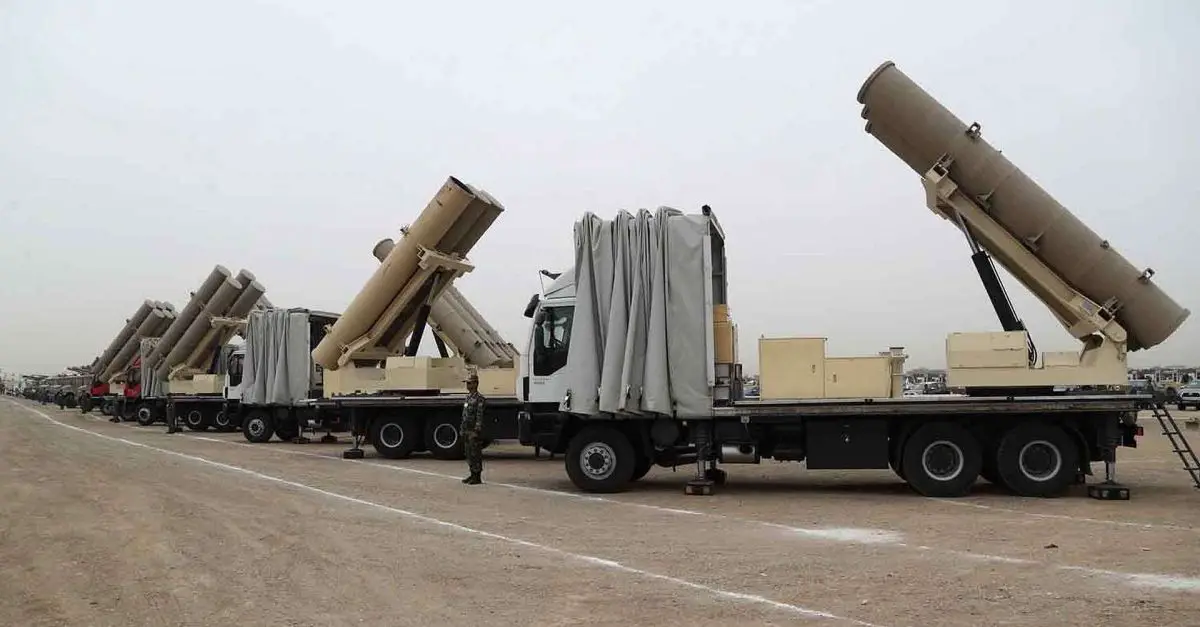Breaking News
Iran to Supply Fath 360 Ballistic Missiles to Russia for Use in Ukraine Conflict.
Multiple intelligence sources have reported that Russian personnel have traveled to Iran to train on the Fath 360 ballistic missile system. This information, disclosed by Reuters on August 9, 2024, indicates that Russia may be preparing to integrate the Iranian-made ballistic missiles into its military arsenal. On August 10, 2024, Iran's UN representative refuted the Reuters report from August 9, 2024, that claimed Iran is planning to supply hundreds of missiles to Russia for its war in Ukraine.
Follow Army Recognition on Google News at this link

The Fath 360 is an Iranian mobile surface-to-surface ballistic missile, known for its precision, supersonic speed, and a range of 120-150 km. (Picture source: TASNIM News Agency)
The Fath 360 is a mobile missile defense system capable of launching ballistic missiles with a maximum range of 120 kilometers (75 miles) and a 150-kilogram warhead. Designed for precision strikes, the Fath-360 is noted for its ability to hit closer-range targets with high accuracy. This makes it particularly useful for Russia, which already has an extensive array of long-range ballistic missiles.
A ballistic missile is a type of missile that is propelled during the initial phase of its flight by a rocket engine, and then follows a predetermined, curved trajectory largely under the influence of gravity as it travels towards its target. These missiles can be launched from various platforms, including land-based silos, mobile launchers, submarines, or aircraft. Ballistic missiles are capable of carrying conventional or nuclear warheads over short, medium, or long distances, ranging from a few hundred kilometers to intercontinental ranges of over 10,000 kilometers. Their high speed and ability to deliver powerful warheads make them a significant component of modern military arsenals and a central element in global strategic deterrence.
According to military experts, the acquisition of the Fath 360 ballistic missile system could allow Russia to diversify its missile deployment strategies. By employing the Iranian system for shorter-range targets, Russia could conserve its own ballistic missile stockpile for strikes on more distant objectives, potentially extending its operational reach in the ongoing conflict with Ukraine.
One intelligence source suggested that the training of Russian personnel on the Fath-360 system is a clear indicator that actual missile deliveries could be imminent. This move underscores the strategic importance of the missile system for Russia, particularly as it seeks to maintain its military momentum in Ukraine.
Since the war in Ukraine began in February 2022, the relationship between Iran and Russia has transformed into a robust strategic alliance with significant implications for regional and global geopolitics. This deepening partnership is driven by a convergence of shared interests, particularly in countering Western influence, navigating around international sanctions, and enhancing military capabilities.
One of the most visible aspects of this collaboration has been in the military domain. Shortly after the conflict erupted, reports indicated that Iran had begun supplying Russia with unmanned aerial vehicles (UAVs), specifically the Shahed-136 drones. These drones, known for their cost-effectiveness and operational flexibility, have been extensively utilized by Russian forces in Ukraine. They serve dual purposes: reconnaissance and as loitering munitions, which can hover over a battlefield before attacking targets. The Shahed-136s have enabled Russia to maintain pressure on Ukrainian forces while conserving more advanced and costly weaponry.
The recent revelations about Russia's interest in acquiring the Iranian Fath-360 missile system further highlight the evolving military ties between the two nations. The Fath-360, designed for precision strikes with a range of 120 kilometers, could significantly bolster Russia's tactical options in Ukraine. Russian personnel have already begun training in Iran to operate this system, suggesting that Moscow is preparing to integrate these missiles into its military operations. The acquisition of the Fath-360 would allow Russia to allocate its more advanced missiles for distant targets while using the Iranian missiles for closer engagements, thereby enhancing its operational flexibility and sustainability in the conflict.
Economic collaboration between Iran and Russia has also intensified as both countries face severe international sanctions—Russia for its invasion of Ukraine and Iran for its nuclear program and regional activities. These sanctions have compelled Tehran and Moscow to explore alternative trade mechanisms, particularly through the de-dollarization of their bilateral trade. In 2022, the two nations agreed to conduct trade in their respective national currencies, the ruble and the rial, as a strategy to circumvent the US dollar-dominated global financial system and reduce the impact of Western economic pressures.
This growing economic and military partnership reflects a broader strategic alignment between Iran and Russia, driven by a shared desire to challenge Western hegemony and assert their influence on the global stage. The collaboration not only strengthens their individual positions but also poses new challenges to the international community, particularly in the context of the ongoing war in Ukraine. As this alliance continues to evolve, its implications will likely resonate far beyond the immediate conflict, shaping the geopolitical landscape for years to come.


























